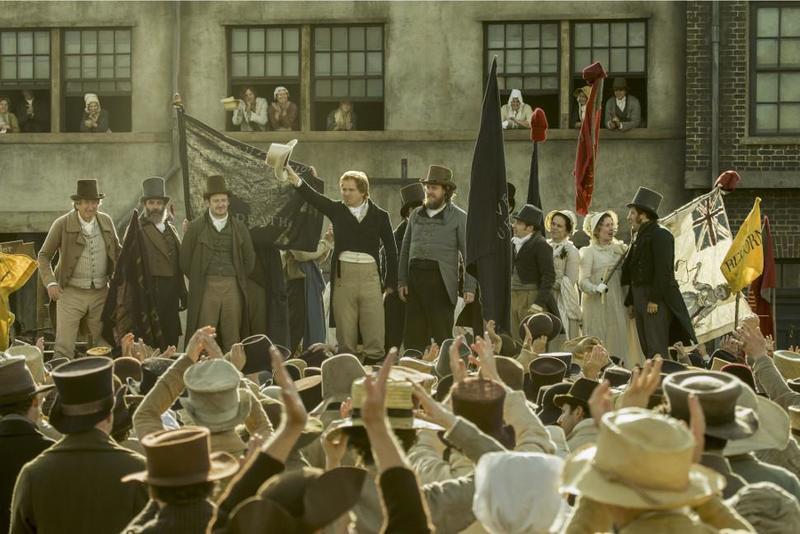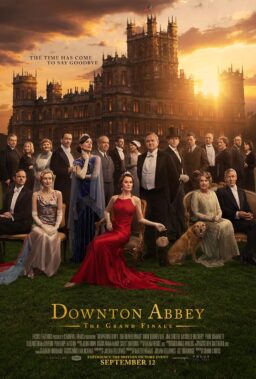In the future, if there is one, film historians chronicling the death of auteurist cinema will cite Luca Guadagnino’s “Suspiria” as the point where this mode of moviemaking definitively entered its decadent stage. This empty, overstuffed, ugly and thoughtless remake—Guadagnino apparently prefers the term “cover version”—of the grindhouse-surreal 1977 film directed by Dario Argento is a breathtaking achievement in hollow, know-somethingish sensationalism that fully deserves to be called “pretentious.” And quite a few other things.
Announcing itself as a film in “Six Acts and an Epilogue,” “Suspiria” is set in the year the first film was released, 1977, in divided Berlin, as the Baader-Meinhof gang-related hijacking of Lufthansa Flight 181 is taking place. A young student at a dance academy is convinced that the place is being run by witches; she frantically tries to convince her psychiatrist, who writes “delusions” in his notebook. This girl disappears; it’s later speculated (incorrectly) that she got overinvolved with radical groups in the divided city. The psychiatrist, played by “newcomer” Lutz Ebersdorf (whom many think is the film’s costar Tilda Swinton in old-male makeup), is tortured by the loss of his wife in World War II. I bring up these two particular threads because they don’t exist in the Argento movie and represent this film’s attempt to make its supernatural horror story resonant to real-world themes and tragedies.
But it’s actually an insulting, opportunistic co-opting of history, which makes the film pretentious. What makes it repellent is the hifalutin brand of misogyny it (relentlessly) soft-pedals, and the deliberately excessive horror imagery it throws up with giggly glee. Whatever you think of Argento’s “Suspiria,” or his work overall, you have to admit that his morbid sadism appears to arise from an authentic impulse.
For Guadagnino, simulated carnage is just another app. I’m racking my brain to find another example of an instance in which a director used his complete artistic freedom for the purpose of flaunting his absolute lack of artistic conviction. And I’m not coming up with much. If you loved “Call Me By Your Name,” you won’t recognize “Suspiria.” It’s too bad for my purposes that I didn’t out-and-out hate “Call Me by Your Name,” because if I had, I could say in addition to that that if you loved “Call Me by Your Name,” you deserve “Suspiria.”

A directorial whiff that I feel rather worse about calling a whiff is “Peterloo,” Mike Leigh’s film about the massacre at St. Peter’s Field in Manchester, England, in 1819. The period is one that Leigh has been eager to make a film about for a long time, and it’s easy to see why. The peaceful protest that ended with fifteen dead and several hundred injured was a milestone in the struggle of England’s working classes. And if you take note of the date, you can calculate that this struggle was joined well before Marx and Engels and their confreres were making their mark. (Before Engels was even born, as it happens; Karl himself was about one year old.) Politics is never far from Leigh’s work, and he has an especial interest in class struggle. His film is an epic about the powerless rather than the powerful. It chronicles the efforts of journalists, working men, and factions of the enlightened upper class to campaign for living wages and representation in the North of England, where industrialization was coming into its own and creating, among other things, new ways to exploit and alienate human labor.
Unfortunately, Leigh’s passion for the material seems to have led him to approach it from an angle more pedagogic than artistic. This results in a film that’s often, as a colleague put it, “dead on its feet.” When the evil magistrates of the region (all these types are portrayed with a cartoonish disdain that feels more Ken Russell than Leigh) suspend habeas corpus, there’s an earnest discussion of the term in a newspaper office, with editors furrowing their brows over how to explain the term to an uneducated readership. William Faulkner once famously explained his problem with scripting Howard Hawks’ “Land of the Pharaohs” by noting that “we didn’t know how a Pharaoh talked.” There’s little convincing sense of how conversation in 1819 went on in this film. And Leigh’s staging of crowd scenes, and the massacre itself, underscores that for all his mastery in other areas, cinematic kinetics are not his bag.

Olivier Assayas steps a little bit out of his own comfort zone with “Non-Fiction,” which on the face of it seems like a life-in-these-times picture in the mode of “Summer Hours.” In that film, a family pondered how to dispose of an artistic legacy left to them by a beloved relative, spurring a lot of smart conversation about the function and utility value of art today. In “Non-Fiction,” the main character (played with peak middle-aged male foxiness by Guillaume Canet) is an editor at a revered publishing firm trying to figure out how to propagate literature in the digital age. This leads to a lot of pleasant but intense conversating about e-books, blogs, Twitter, all the stuff The Kids are into.
But this picture is less a genuine inquiry into these issues than it is a sex comedy. Canet’s editor turns down a new manuscript from one of his long-time authors, a shaggy schnook played by Vincent Macaigne in the funniest performance I’ve seen in a French film in a while — the guy is practically a Gallic Charlie Day. Canet’s wife, played by the ever-transcendent Juliette Binoche, fears her husband is having an affair, and he is, with the sleek new digital manager at his firm. But Binoche’s character has her own thing going, and my jaw dropped when I found out. This is a sexy, fun film filled with a lot of zingers, but it also feels a little less personal than many of Assayas’ movies, perhaps in part because it’s not stuffed to the gills with songs he loves. And that’s not a bad thing. When the movie closes, with a song the director clearly loves, one feels a particular contentment at having experienced this refined and wry demonstration of what fools we mortals be.

If Joel and Ethan Coen’s “Hail, Caesar!” left you impatient for when the sibling filmmakers were gonna get serious again, I have good news and bad news. “The Ballad of Buster Scruggs,” the anthology film that’s not so much a collection of Western stories as it is a collection of stories about Western stories, is every bit as goofy, if not goofier, than “Hail, Caesar!” It is at the same time as death-obsessed as any film they’ve ever done, and as fatalistically mordant as “A Serious Man.”
Opening with the image of a story book, “Ballad” opens with the title story, about a very cheerful singing cowboy of the name Scruggs, who after breaking the fourth wall in song and dialogue, reveals a “Wanted” poster that advertises him as “The Misanthrope.” Played by Tim Blake Nelson flashing his most hilarious grin, he doesn’t SEEM like a curmudgeon right off the bat. We soon learn that he will kill you as soon as look at you, literally. So there’s that. This story considers the maxim about how if you’re the fastest gun in the west, there’s always a fella who’s gonna want to prove he’s faster. The next story, with James Franco as a would-be bank-robber who gets lucky, exists solely for the sake of a two-word joke that’s one of the funniest in the Coen’s filmography. Things turn extremely grim in “Meal Ticket” and possibly grimmer still in … well, I don’t want to say.
This film has a lot in it; at 133 minutes, it’s just a little longer than “No Country For Old Men,” which I believe was the longest picture these very tight moviemakers had done until now. But it’s extremely fleet and beautifully crafted. For as much as the movie is a pastiche, it’s clear the filmmakers researched the hell out of the period detail; and they have a lot of fun, as they usually do, with verbal usage, reveling in the ornate locution used by characters in pulp Westerns. (Zoe Kazan gets to pronounce “apophthegm” in one line.)
They also adhere to pulp convention in the portrayal of Native Americans, which I imagine will raise some eyebrows when the film gets to viewers in the States. The logic of it is genuine, but people who complained about the lack of diversity in “Hail, Caesar!” aren’t going to find much to placate them here. In fact, they may wind up feeling subtweeted, which would be ridiculous, because nobody undertakes this big of a production just for a subtweet.












